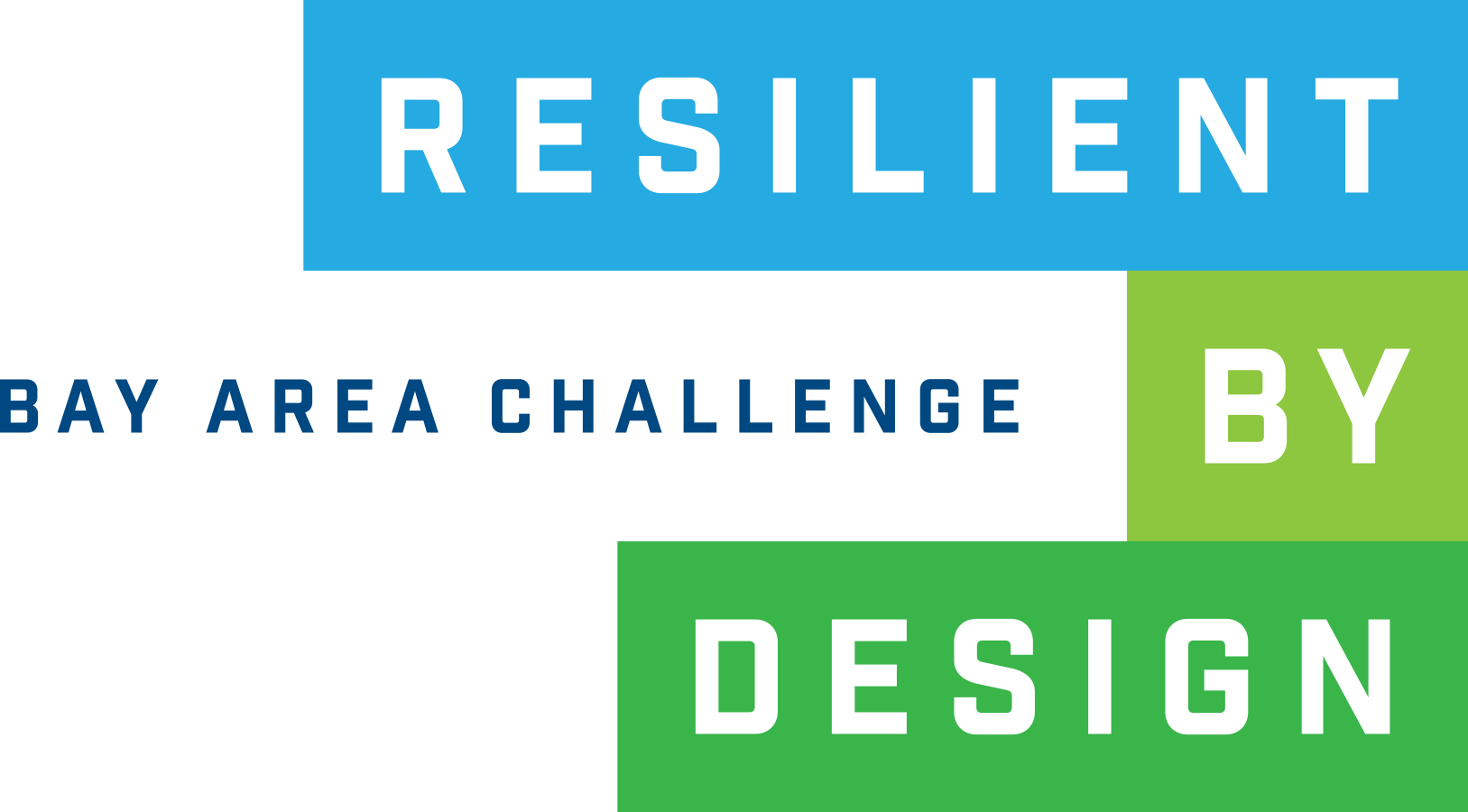Learning from Resilience
During the Resilient by Design | Bay Area Challenge, many Bay Area graduate and undergraduate courses from California College of the Arts (CCA), UC Davis, UC Berkeley, and Stanford paralleled the Resilient by Design process. Their research has informed the continued work in the RBD project areas and has fed into the greater collective knowledge base of regional resilience. A selection of work from these courses are featured below.
Graphitecture/ UCD
Professor Brett Snyder
Graphitecture Studio at UC Davis, led by Professor Brett Snyder, asked: in what ways can mobile technologies—and more broadly, participatory design—enhance and create more meaningful relationships to our environments? The studio used Alameda Creek as a case study and projects included an app to allow visitors to see images of the historical creek against predicted disappearing marshland to a project that envisioned underutilized areas of the creek to become magnets for public art.
Ecological Urban Design Studio/UCB
Professor Kristina Hill
UC Berkeley graduate students working with Professor Kristina Hill took on a "placekeeping" design exercise, instead of "placemaking" - since typical urban placemaking can feel imposed and accelerate displacement in communities of color. Continuing the All Bay Collective partnership, this course was co taught by Professor Hill as well as Jamie Phillips, Nico Wright and Chris Guillard from CMG landscape Architecture.
The students asked whether a residential street right-of-way can do important work for climate and economic adaptation - by adding street trees, Accessory Dwelling Units (ADUs), community agriculture, bike lending libraries - and using canals as a new form of green infrastructure, to draw the high water table down as sea levels rise. The students made maps of street trees and parcel ownership, groundwater and contaminated soils, and shared those with the East Oakland Neighborhood Initiative (EONI), funded by TCC grant to educate and organize about climate change in East Oakland.
STOP CALLING ME RESILIENT/CCA
Professor Janette Kim
Students in this design studio asked how structural logics such as the ownership and management of land, access to resources like energy and water, and the social structure of households and communities can overlay onto the hydrological, biological and infrastructural challenges of sea level rise. The studio (named after a poster circulated around New Orleans after Hurricane Katrina) built on the findings of the All Bay Collective to develop design strategies that support social and racial equity in Deep East Oakland.
Known Unknowns: Scales of Inclusion/CCA
This studio asked how architecture can shape what sociologist Ulrich Bech has called a “risk society”—a society uniquely challenged by the possible side-effects, or risks, of modernization. Students explored the idea that design in the era of climate change demands collective responses to the challenges of both everyday life and possible futures. Projects developed novel and effective techniques for architects to manage uncertainty.
buoyant Ecologies / CCA
The 2017 Buoyant Ecologies architectural studio focused on the Maldives, a nation averaging only 1.5 meters above the current sea level. The Maldives consist of over 1100 islands arranged in 26 atolls famous for their pristine coral reefs and resorts. Less photographed are their more populated islands where many smaller villages subsist on fishing and tourism, both of which are in danger of devastation from erosion, warming oceans and rising seas. The studio recognized this mutual dependence of ecology and economy and speculated on an adaptive architectural prototype capable of providing the Maldivians with a way to live independently of the land and self sufficiently on the ocean. Building upon previous research work testing digitally fabricated marine substrates in ocean water, the architectural studio scales up this research to investigate the formation of a floating community built upon a symbiotic relationship between housing, tourism, and research.
Disasters, Decisions, Development in Sustainable Urban Systems/ Stanford
Stanford students are participating through a project-based, service-learning course that closely mirrors RBD. The Sustainable Urban Systems Initiative and Stanford Urban Resilience Initiative (Civil & Environmental Engineering), Department of Geophysics, and Bill Lane Center for the American West (Public Policy) have joined forces to organize this course, called D3+SUS (Disasters, Decisions, Development in Sustainable Urban Systems). Students have formed interdisciplinary teams and are working alongside governments and community groups to identify critical vulnerabilities in San Mateo and Santa Clara Counties and nurture participatory solutions that will strengthen the Bay Area's resilience to sea level rise, severe storms, flooding and earthquakes.






